Black, White and Green Boxes—On Mao Chenyu’s “Litchi Girl”
| November 14, 2018
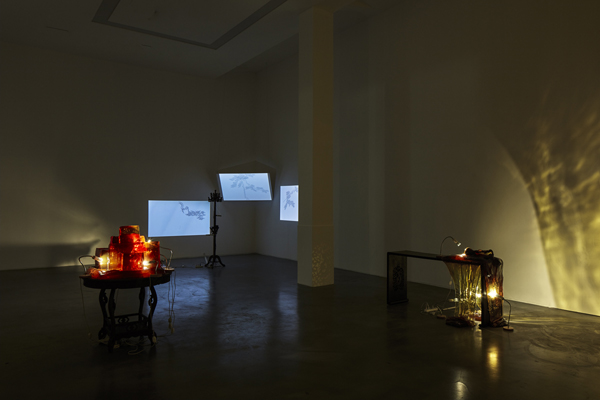
All images courtesy A+ Contemporary
Classical museum, with marble stairs leading up to its entrance, elevates the public to the guarded art, the embodiment of the best of human minds; modern museum, same level with the street and the department store, democratizes art to the mass, while erases the context of the supposedly autonomous art objects; And contemporary art gallery, what we refer to as the white cube, brings art back to its contexts—the white awaits to be refashioned each time according to the objects displayed.
Modernist cinema relocates the mise-en-scène of classical Hollywood cinema from studios to existing post-war locales—the background becomes equally important as the character, and long takes and long shots are increasingly theorized alongside facial close-ups of psychological intensity. And then cinema “died” with the advent of the digital, but the modernist myth of individual talent, the specter of auteur from the analogue age, still haunts the black box of cinema.

A documentary filmmaker turned artist, Mao Chenyu thrives on the contradictions between the white and black spaces. Strategies of resistance from both the white and black discourses are organized into an aesthetic experience of the “green”—derived from the technique of the green screen through which cinematic protagonists can be relocated at will during digital post-production. For his sculptures, videos, paintings and installations in solo exhibition “Litchi Girl,” instead of using any wall text, Mao paints the darkened white-cube green.
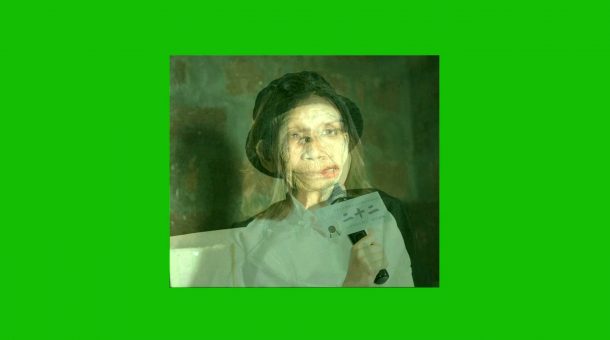
Single-channel video, HD, color, sound, 12 min
Who is Litchi Girl? There is no visual trace of her in the entire exhibition, only one footnote leading us to her story, in the single-channel video Memory that Self Vanishes with 2/3 Speed of Light: “In 1967 ‘Litchi Girl’ escaped a labor camp guarded by men, and jumped into the river. Several days later her body was found at the river mouth near Dongting Lake, her breasts already swollen.” The video superimposes images of two other women, a surviving comfort woman appeared in the theatrically released documentary Twenty-Two (2015), and Lin Zhao, a dissident imprisoned and executed during the Cultural Revolution, and the main subject of the censored independent documentary Searching Lin Zhao’s Soul (2007). These images are juxtaposed with photos of the socialist realist ballet performance of Red Detachment of Women, as well as the virtual girlfriend of Ryan Gosling from Blade Runner 2049.
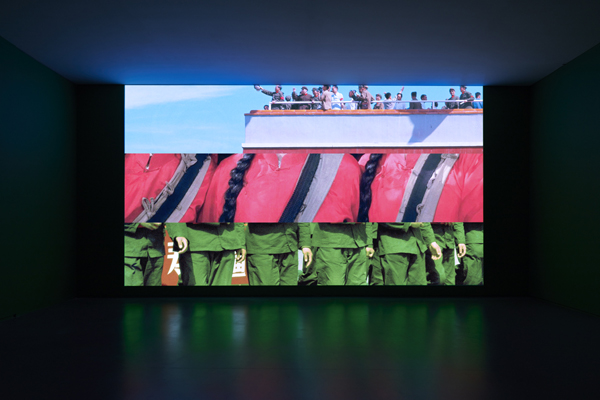
Single-channel video, HD, color, sound, 12 min
If Litchi Girl did exist and had a face, she would look like all the above-mentioned women’s faces superimposed. Mao does not want Litchi Girl to achieve form, like other images of female victims of historical traumas, either endorsed or censored by the current regime. Litchi Girl does not even have to be from the past. In the sci-fi world of Blade Runner 2049 where the whole environment is mutable and stripped of national marks, the comfort woman remains.
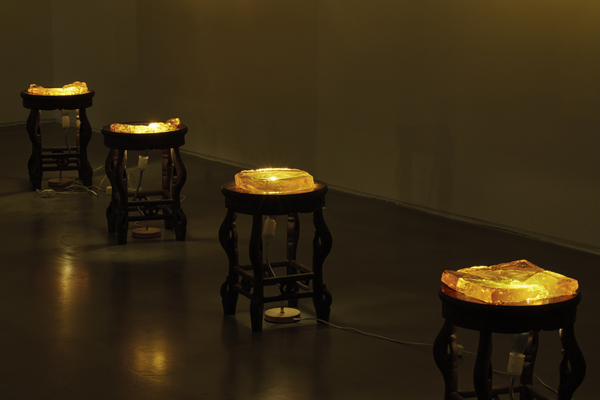
Installation (wooden chairs, rosin)
Dimensions variable
The video also documents an environmental event: In Dongting Lake area, where Mao is from, two-million black poplar trees were expunged completely within one month in 2017 under an executive order. For Mao’s potential film on Litchi Girl, the mise-en-scène background proves to be as precarious, if not more so, than the foreground character. The auteur theory, situated at the pinnacle of modernist cinema, privileges certain figure-ground relationship bearing unmistakable personal stamps of a director. It has been adopted by Chinese independent documentary filmmakers to convoy a culture of individual expression. But Mao no longer subscribes to the auteur tradition as his former peers. Instead he emptied out conventional documentary’s trope of synecdoche, in that a figure is both herself and a stereotype, and a ground is both a specific condition and a symbolic totality. Mao questions, can there still be auteur when the figure suffers permanently and the ground transforms, “with the speed of light”?
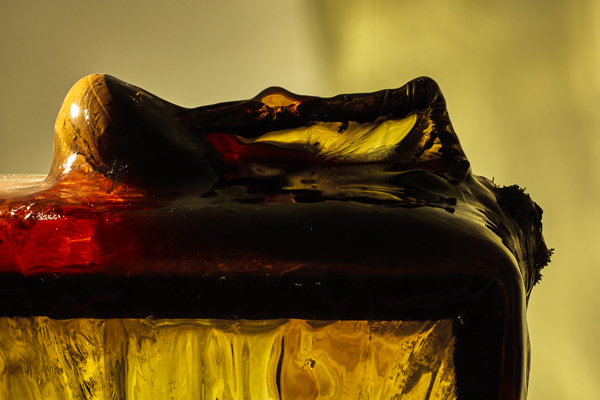
Installation (rosin, wooden table, bonsai)
180 x 50 x 120 cm
When moving-image moves from the black to the white box, it both performs and critiques itself. Such self-reflexivity dawns on objects and paintings, as they relocate from the white to the green box. We see scattered on the first floor of the exhibition the Thing series, large chunks of rosin that resemble amber after chemical processing. These free-flowing shapes of rosin are placed intimately in-between ethereal small lamps, and supported by antique Chinese furniture pieces. Amber is perhaps the most autonomous type of object to be displayed in exhibitions, for it’s always already both form and content, both nature and culture. Yet here means of display—the furniture and the lamps—are foregrounded as much as the amber. Absent is the reference that these rosins are collected from a species of fast-growing pine tree imported from North America during the 1980s to prevent soil erosion around Yangtze River. In a similar way, we don’t immediately know the abstract patterns from the series Image Archaeology are in fact transcribed from antique jade objects onto rice papers then framed in light boxes.
-610x610.jpg)
Ink on paper
54 x 53 cm (including frame)
As an artist consistently investigates the cultural landscape of rural Dongting Lake area, Mao voluntarily decontextualizes his amber and jade so as to contextualize modernism’s once progressive act of decontextualization: to strip of objects’ historical and political referents and highlight their formal qualities. Instead of pursuing a pseudo aesthetic universalism like the modernists, he breaks down the borders created by museums to separate the inanimate from the animate, art from craft. The small lamps are not ready-made. They shed light on the difference between “you don’t know what you don’t know” and “knowing that you don’t know.” For Mao, the white cube can only deliver how to get to know what we don’t know, when we can contextualize the absence of contexts, the erasure of contexts, or the uneven distribution of contexts.
InstallationGreen-curtain,Engraved-jades),尺寸可变-Dimensions-variable-610x407.jpg)
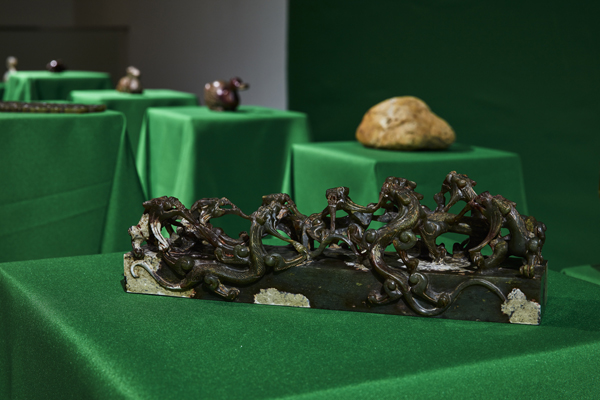
Installation (green curtain, engraved jades)
Dimensions variable
We used to determine the identity of the dead by studying their grave goods. On the second floor of the exhibition, twelve grave goods are presented as puzzles on green pedestals against a green wall. This installation, titled Field No. 1, calls for a future context in which we would know the goods and then know the dead. The artist imagines, one day when all political, social and historical references are ready and accessible, Litchi Girl would eventually reveal herself.


